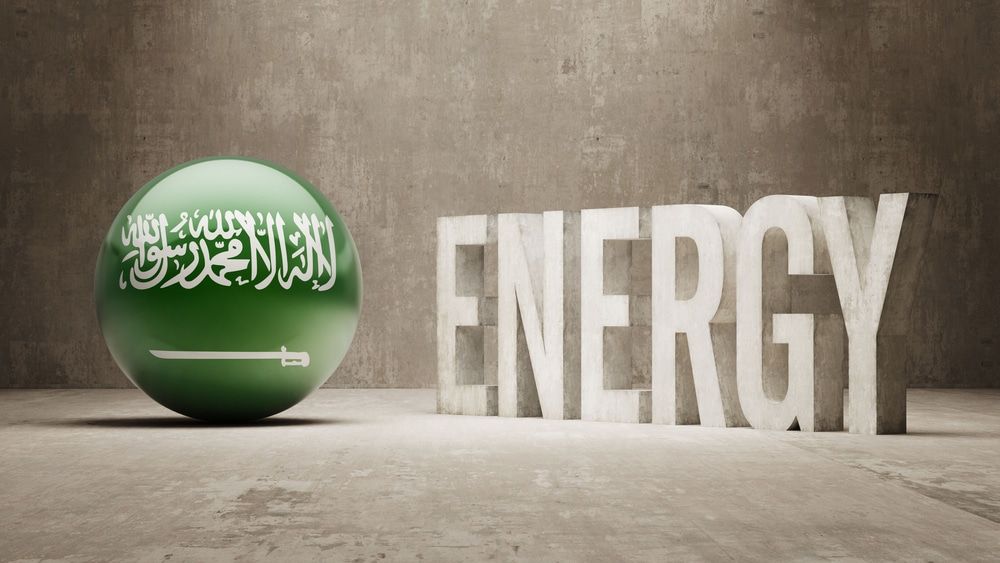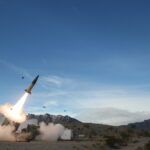US-Saudi civil nuclear negotiations: finding a practical compromise
By Robert Einhorn | January 12, 2018

After a lengthy hiatus, negotiations will soon resume between the United States and Saudi Arabia on an agreement for civil nuclear cooperation. Concluding a bilateral civil nuclear agreement (often called a “123 agreement,” after the section of the Atomic Energy Act mandating such agreements for nuclear cooperation with other countries) would enable US companies to participate in the Saudi Kingdom’s ambitious plans to build a fleet of nuclear power reactors to meet its growing electricity requirements. Previous negotiations stalemated over the treatment of uranium enrichment, with the United States insisting that Saudi Arabia accept a legally binding commitment not to engage in enrichment or plutonium reprocessing and the Saudis refusing to foreclose what they regard as their sovereign right to pursue nuclear technologies of their choosing for peaceful purposes.
Given strong domestic pressures in both countries to adhere to the positions that produced the current stalemate, the outlook for resumed negotiations is uncertain. But with some flexibility by both sides, it may be possible to craft a compromise that serves US interests, including its nonproliferation objectives, without undermining the Kingdom’s ability to meet the practical needs of its civil nuclear energy program.
Possible US participation in the Saudi civil nuclear program. In recent months, the Saudi government has reached out to nuclear reactor vendors to encourage them to bid on a project to construct two nuclear power reactors in the Kingdom, an initial phase in a multibillion-dollar program intended eventually to consist of about 16 large reactors. Saudi Energy Minister Khalid al-Falih said he expected to sign contracts for the two reactors by the end of 2018 and hoped that American companies will compete for the projects. Westinghouse and other US-based companies are reportedly discussing the formation of a consortium to bid on the project. US Energy Secretary Rick Perry, who sees American participation in the potentially lucrative Saudi nuclear energy market as a way to help revitalize the moribund US nuclear industry, visited Riyadh in December and indicated that he expected US-Saudi negotiations on a 123 agreement to get underway shortly.
To overcome the impasse that has stalled completion of the 123 agreement in the last few years, the two sides will have to find common ground on how to deal with uranium enrichment and plutonium reprocessing, two dual-use “fuel cycle” technologies that can be used to produce fuel for nuclear reactors but can also be used to produce the highly enriched uranium or separated plutonium needed for nuclear weapons.
The “gold standard.” All US agreements for civil nuclear cooperation with foreign countries require that US partners obtain the consent of the United States government if they wish to enrich or reprocess nuclear material supplied by the United States or produced in US-supplied reactors. In most agreements, that consent must be requested by the foreign partner on a case-by-case basis, and, given the long-standing US policy to discourage the spread of fuel cycle capabilities, US partners know that, in practice, that consent will not be granted. In a small number of agreements, including with Japan, EURATOM (the multinational European nuclear agency), China, and India, the United States has agreed to advanced consent, allowing its partner to proceed with enrichment or reprocessing at its own discretion without having to request consent on a case-by-case basis.
In just two cases, the United Arab Emirates (UAE) and Taiwan, the 123 agreements contain legally binding commitments by US partners not to engage in any enrichment or reprocessing, not just of US-supplied nuclear material or nuclear material used in or produced in a US-supplied reactor, but also of their own nuclear material or material acquired from non-US suppliers. By barring fuel cycle activities altogether and thereby virtually eliminating the possibility of those partners developing nuclear weapons indigenously, these agreements were widely seen as establishing a valuable new nonproliferation standard, a “gold standard,” viewed by many supporters of nonproliferation as setting a precedent for future US 123 agreements.
Since the entry into force of the UAE agreement in 2009, the United States has sought the gold standard in negotiations of new 123 agreements. In addition to making the case for a legally binding renunciation of fuel cycle capabilities on nonproliferation grounds, US officials pointed out that building indigenous enrichment or reprocessing facilities made little economic or programmatic sense, especially for relatively small nuclear power programs just getting under way. They noted that, with the well-supplied international market in enriched uranium fuels, it was far more advantageous to purchase enriched fuels from highly efficient, relatively low-cost foreign suppliers than to embark on an indigenous fuel cycle program that would be expensive, time-consuming, and probably unsuccessful, given recently tightened restrictions by nuclear supplier governments on the transfer of enrichment and reprocessing equipment and technology.
Despite these arguments, prospective partner governments refused to accept legally binding commitments to forgo fuel cycle capabilities. While indicating that they had no current plans or intentions to acquire those capabilities, they maintained that, as a matter of principle, they were unwilling to give up their sovereign right to pursue enrichment or reprocessing programs. Their pushback against the gold standard reflected the longstanding position of many non-nuclear weapon states that efforts to prevent them from acquiring fuel cycle technologies were unwarranted and contrary to what they regarded as the Non-Proliferation Treaty’s guarantee of access to such technologies for peaceful purposes.
In the case of its 123 agreement with Vietnam, the United States was prepared to settle for less than the gold standard, specifically, a non-binding statement of intent in the agreement’s preamble that Vietnam had no intention to pursue fuel cycle capabilities. Despite some concerns on Capitol Hill about the failure to achieve the gold standard, Congress did not pursue a joint resolution of disapproval that could have blocked the agreement with Vietnam, and it entered into force in 2014.
However, given heightened US concerns about proliferation risks in the Middle East, the United States has not been willing, in negotiations with Jordan and Saudi Arabia, to settle for less than a legally binding renunciation of fuel cycle capabilities. As a result, talks bogged down with both countries a few years ago.
Continued Saudi resistance to the gold standard. With the resumption of US-Saudi 123 negotiations and the Trump administration’s interest in US companies participating in the Saudi nuclear power program, the question of how to deal with fuel cycle capabilities has once again come to the fore, and the Kingdom remains committed to keeping its future fuel cycle options open, especially in the case of enrichment.
In a May 2008 US-Saudi memorandum of understanding in which the United States agreed to assist the Kingdom to develop nuclear energy for use in medicine, industry, and power generation, Saudi Arabia stated “its intention to rely on international markets for nuclear fuel and to not pursue sensitive nuclear technologies, which stands in direct contrast to the actions of Iran.” Notwithstanding this earlier statement of intent, the Saudis have resisted a legally binding commitment to forgo fuel cycle technologies.
In an interview with Reuters in December 2017, Saudi Energy Minister Falih suggested that, while the Kingdom is determined to use nuclear energy strictly for peaceful purposes, it is seriously considering an eventual enrichment capability. He said he was encouraged by studies indicating that Saudi Arabia has large domestic uranium resources and maintained, in an apparent allusion to indigenous enrichment, that “we will not deprive ourselves of accessing our natural resources and localizing an industry that we intend to be with us for the long term.” Senior officials of the King Abdullah City for Atomic and Renewable Energy (KACARE), which has the lead for the Saudi civil nuclear program, believe that the need to fuel a large fleet of 16 or more reactors provides a much stronger justification for an indigenous enrichment capability than the much smaller nuclear power program pursued by the UAE.
Saudi nuclear hedging. Saudi interest in enrichment is not motivated exclusively (or many observers would say primarily) by the Kingdom’s ambitious civil nuclear energy plans. There is clearly also a security dimension, based largely on Saudi Arabia’s grave concern about the future acquisition of nuclear weapons by its arch-rival Iran and the conviction of many Saudis that they need to have the nuclear infrastructure in place to match the Iranians if necessary.
The Saudis have had strong misgivings about the Iran nuclear deal (the Joint Comprehensive Plan of Action, or JCPOA), largely because it failed to address Iran’s expansionist regional designs and because the sanctions relief it provided gave Tehran additional resources to pursue those designs. Saudi officials recognize that, at least for the time being, the JCPOA effectively prevents Iran from building the enrichment capacity it would need to produce nuclear weapons. But they have strong reservations about the JCPOA’s so-called “sunset” provisions–the expiration after eight, 10, and 15 years of key restrictions on Iran’s enrichment activities that will enable Iran legally to build up to an “industrial scale” enrichment capability and thereby decrease the amount of time it would need to produce enough highly enriched uranium for a single nuclear bomb from the current 12 months to a matter of days.
Moreover, the Saudis fear that the JCPOA only delays and does not eliminate Iran’s nuclear weapons ambitions. They are convinced that, once Iran is free to build up its nuclear capacity, it will achieve a “threshold” nuclear weapons capability and later break out of its nonproliferation obligations to produce nuclear weapons at a time of its choosing. From time to time, influential Saudis have hinted, usually unofficially and privately, that a Saudi enrichment program would enable the Kingdom to prepare for and respond to such a scenario. In defending Saudi Arabia’s right to pursue enrichment, Prince Turki al-Faisal, the former Saudi intelligence chief and ambassador in Washington and an advocate of matching Iranian capabilities, notes that the JCPOA allows Iran to have an enrichment program and argues that the Kingdom should be allowed to do so as well.
Reduced US negotiating leverage. The widespread belief in Washington that Saudi interest in enrichment stems largely from a desire to match a future Iranian latent or actual nuclear weapons capability only reinforces support for sticking to the gold standard in a US-Saudi Arabia 123 agreement. But US leverage to gain Saudi acceptance of a legally binding ban on fuel cycle capabilities is limited. In the increasingly distant past, the United States had a dominant position in the international supply of nuclear reactors and fuels and could pretty much dictate the conditions under which nuclear commerce would take place. That is no longer the case.
To be sure, Washington still retains some leverage in 123 negotiations. Countries embarking on nuclear energy programs continue to see value in cooperating with the United States. They prize the advanced reactor technologies that the US nuclear industry can offer; they admire the US regulatory framework for ensuring nuclear safety; and they see the conclusion of a 123 agreement with the United States as conferring a seal of approval on their nuclear program that could facilitate cooperation with other suppliers. For some countries, a civil nuclear agreement also has the benefit of reinforcing bilateral relations with the United States, and the improved ties between the Trump administration and the current Saudi government led by Crown Prince Mohammed bin Salman may help Washington secure somewhat better terms for bilateral nuclear cooperation.
But offsetting these incentives for cooperating with the United States is the growing number of competitors in today’s nuclear market that can provide a full range of nuclear products and services and are aggressively seeking to attract customers, often by offering highly advantageous financing. None of the other supplier governments can be expected to insist on, or even propose, the gold standard in their agreements for civil nuclear cooperation. And few, if any, are likely to press for nonproliferation, nuclear security, and nuclear safety provisions as rigorous as those contained in US 123 agreements. Indeed, some governments, including perhaps Russia and China, may not even require their consent before a partner is allowed to enrich nuclear material they supply.
If US insistence on the gold standard continues to block a 123 agreement with Saudi Arabia and drives the Saudis to cooperate with less demanding countries, the United States would forfeit the benefits of direct involvement in the Saudi nuclear program, including the window it would provide into Saudi capabilities and plans and the ability to exert influence on aspects of the Saudi program related to nonproliferation, safeguards, safety, and security.
Finding a practical compromise. Continuing to press Saudi Arabia to accept a legally binding commitment to forgo fuel cycle capabilities will almost surely prove futile. If the United States wishes to cooperate with Saudi Arabia in the civil nuclear area, it will need to adopt an approach that serves US nonproliferation objectives without completely shutting the door to a Saudi fuel cycle capability if, at some future time, the Kingdom develops a genuine practical need to pursue such a capability for its civil nuclear program.
Saudi nuclear energy officials recognize that any practical need they may have for enrichment lies in the distant future. The Saudi nuclear program is still in its infancy. With a nearly non-existent indigenous human infrastructure, the top Saudi priority now is training a cadre of nuclear scientists and engineers. The Kingdom is years away from constructing and operating its first power reactor and decades away from operating a planned fleet of 16 reactors that could theoretically justify an indigenous enrichment capability on economic grounds, and even then, the economic case for producing fuel indigenously rather than purchasing it from more efficient, lower-cost suppliers is likely to remain questionable. For the foreseeable future, Saudi Arabia will be entirely dependent on foreign partners to get its program off the ground. And given current Nuclear Suppliers Group guidelines, none of these foreign suppliers can be expected to assist the Saudis with fuel cycle technologies. KACARE officials commented in 2016 that there were no current plans for an enrichment program in the Kingdom and that they did not anticipate such a program for the next 25 years.
Given these practical considerations, especially the timeframe in which the Saudi nuclear power program is likely to evolve, the following approach might provide the basis for a compromise solution to the current impasse.
- Conclude a 123 agreement that contains a legally binding commitment not to pursue enrichment and reprocessing capabilities in Saudi Arabia during the agreement’s first 15 years.
- Establish in the agreement a bilateral fuel cycle commission that, beginning in year 10, would jointly evaluate future Saudi reactor fuel requirements and consider alternative means of meeting those requirements, including indigenous enrichment. The commission would take into account such factors as progress in the construction of Saudi power reactors, the pricing and reliability of the international fuel market, regional fuel cycle developments, and nonproliferation considerations.
- Provide in the agreement that, starting in year 15, instead of a blanket prohibition, specific Saudi enrichment and reprocessing activities would be allowed if approved on a case-by-case basis by mutual consent.
- Adopt a shorter duration than typical in US 123 agreements (e.g., a fixed duration of 25 or 20 years) that would allow Saudi Arabia, without invoking the agreement’s withdrawal provision, to end the agreement and terminate its commitment to forgo fuel cycle capabilities if it believed the United States was exercising its consent rights in an unreasonably restrictive manner. (In keeping with the longstanding US approach to the perpetuity of nonproliferation controls in US 123 agreements–namely, that controls on equipment or materials supplied by the United States and on materials produced in U.S. reactors would remain in effect even after termination or expiration of the agreement– termination or expiration of a US-Saudi 123 agreement would presumably still not allow the Kingdom to enrich or reprocess materials that had been supplied by the United States or produced in US-supplied reactors. However, it would allow Saudi Arabia to enrich or reprocess non-US material.)
In addition to the many standard provisions of US 123 agreements required by US law largely to serve nonproliferation objectives, the US-Saudi agreement could contain additional elements that have already been adopted elsewhere in the Middle East—including, for example, the requirement to adhere to the IAEA Additional Protocol (which provides for extensive monitoring and data sharing) and spent fuel arrangements (which provide for the removal from a country of plutonium-bearing spent reactor fuel). The JCPOA requires Iran first to provisionally apply and later to ratify the Additional Protocol, and it also requires the removal of reactor spent fuel from Iranian territory.
The approach to a US-Saudi 123 agreement outlined here would be a departure from the current positions of the two governments, but it is consistent with the core objectives they have articulated.
From the US perspective, the approach is not pure gold. It does not prohibit a Saudi fuel cycle capability for the indefinite future and would therefore be more permissive than the US-UAE 123 agreement. A related concern is that a US-Saudi agreement along the lines suggested here would enable the Emiratis to invoke a provision of their 123 agreement that, in the event the United States concludes a more “favorable” 123 agreement with another Middle East country, the UAE would be entitled to consult with the United States regarding the possibility of amending its agreement to make its terms equally favorable.
But the proposed arrangement has important benefits. It would rule out a Saudi fuel cycle capability for the near and middle terms, at a minimum. By enabling the United States to participate in the Saudi nuclear energy program, it would provide insights into Saudi nuclear capabilities and intentions, and it would give Washington greater standing and opportunity to influence the Kingdom’s future fuel cycle choices. Moreover, as long as the agreement remained in force, the Saudis could not proceed with fuel cycle activities without obtaining US consent. Together with the JCPOA’s restrictions on Iran’s fuel cycle activities, the approach would reduce the prospect of a near-term competition in destabilizing fuel cycle programs in the Middle East.
From the Saudi perspective, the approach would not satisfy those in the Kingdom who would like to proceed soon with enrichment, including those who believe Iran’s enrichment program must be matched. Also problematic for some Saudis, the approach would give the United States an important voice in Saudi fuel cycle choices, including the ability to veto Saudi preferences as long as the agreement remained in force. But by establishing a bilateral fuel cycle commission after 10 years, it would legitimize consideration of future fuel cycle options, including enrichment. And by adopting an approach to duration shorter than in other US 123 agreements, it would provide the Kingdom a somewhat earlier opportunity, without invoking the agreement’s withdrawal provision, to end its commitment to forgo fuel cycle activities if it believed the United States was unjustifiably refusing to give its consent. Importantly, given that the Saudi civil nuclear program would have no practical need for enrichment for at least 20-25 years, an approach that precluded enrichment for that length of time and kept open the option to proceed with enrichment at the end of that period would seem compatible with stated Saudi civil nuclear energy plans and interests.
For the Trump administration, the choice is not between the gold standard and the approach suggested here. In the case of Saudi Arabia, the gold standard is not realistically attainable. The real choice is between the kind of approach suggested here and not having an agreement for civil nuclear cooperation with Saudi Arabia. And not having a 123 agreement with the Kingdom would likely mean Saudi nuclear cooperation with nuclear suppliers less committed to rigorous nonproliferation conditions and the resulting possibility of near-term Saudi efforts to pursue fuel cycle technologies. Insisting on the nonproliferation gold standard could produce a net loss for nonproliferation, not to mention a possible commercial loss for the United States.
Together, we make the world safer.
The Bulletin elevates expert voices above the noise. But as an independent nonprofit organization, our operations depend on the support of readers like you. Help us continue to deliver quality journalism that holds leaders accountable. Your support of our work at any level is important. In return, we promise our coverage will be understandable, influential, vigilant, solution-oriented, and fair-minded. Together we can make a difference.
Topics: Analysis, Nuclear Energy, Nuclear Weapons
















This article is comprehensive and very convincing. Basically it proposes for Saudi Arabia a regime quite similar to the one provided for Iran by the JCPOA. Treating the two countries in an equivalent way makes a lot of sense. The problem I see is that the Trump administration cannot agree in principle to any arrangement which has any resemblance with the JCPOA which has the “sin ” of having been negotiated by the Obama administration.Personally I have always seen the JCPOA as a model for future nuclear arrangements despite the fact the Plan of Action itself specifically indicates that its… Read more »